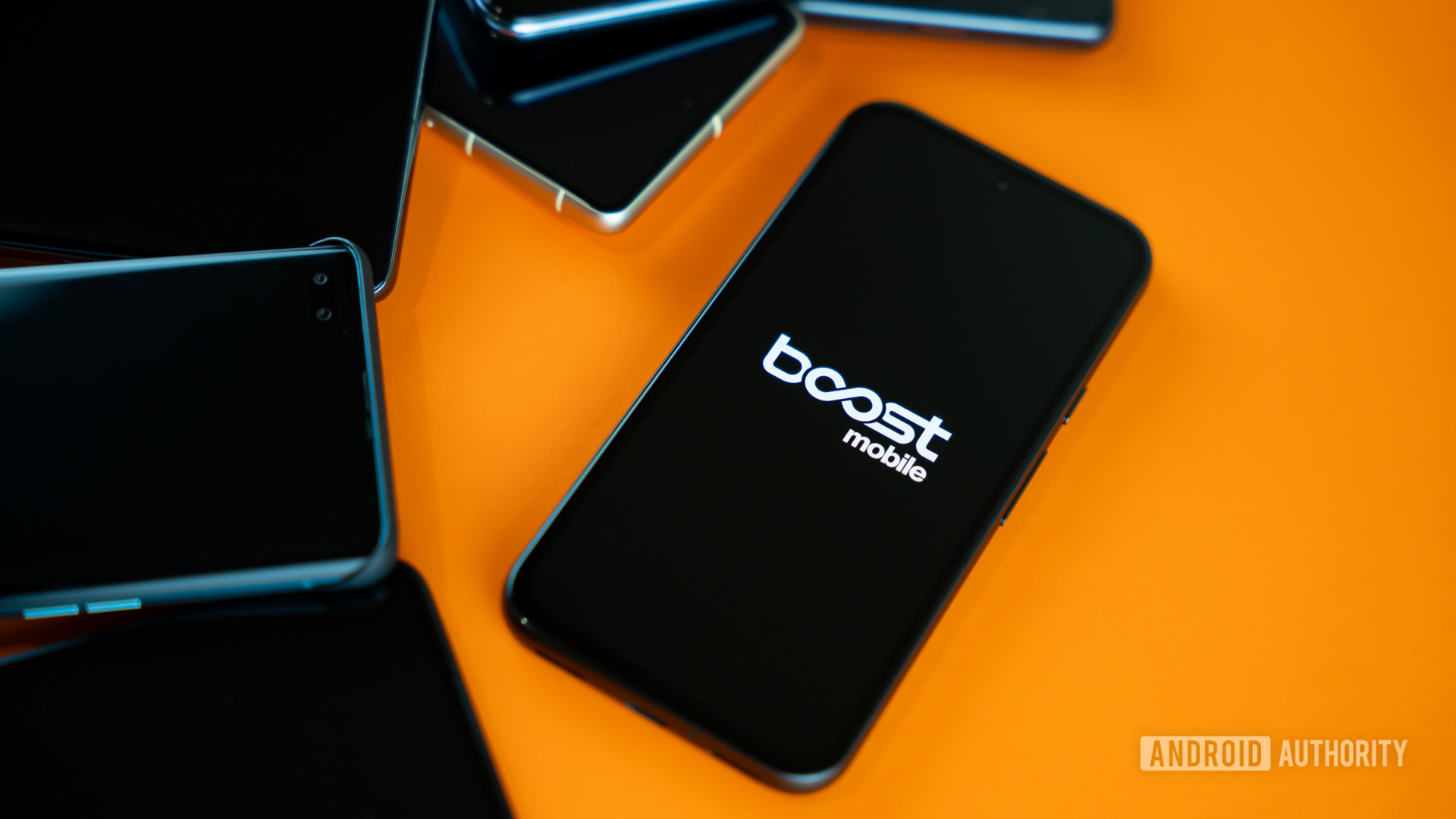Affiliate links on Android Authority may earn us a commission. Learn more.
Boost Mobile has evolved beyond its MVNO roots, declares its own 5G network is ready to compete

- Boost Mobile is officially dropping its MVNO status while announcing it plans to invest more than $10 billion total to build out its own 5G network.
- The carrier is also introducing its own budget phone, the 5G Summit, which will retail for under $100 but be available for free to new customers or just $20 for existing upgrades.
- You can give the network a try risk-free with a 30-day money-back guarantee. Boost also is giving you the chance to get $1000 off an iPhone or Galaxy device with select plans.
It’s been four years in the making, but today Boost Mobile is officially shedding its label as a mobile virtual network operator (MVNO) as it gears up to better compete with Verizon, AT&T, and T-Mobile as the fourth-largest carrier in the United States.
According to a rep from the Dish-Network-owned carrier, Boost’s in-house 5G network now covers 70% of the U.S. population and is on track to reach 80% by the end of the year. The company is also dedicated to expanding this footprint. In total, the company plans to invest more than $10 billion total to build out its own 5G network. For any coverage gaps, Boost will continue to rely on roaming agreements with partners, allowing it to reach 99% of the country. The carrier will no longer officially consider itself an MVNO.
So, how is this different from how Boost Mobile has been operating recently? On paper, not much.
Boost first announced its 70% 5G coverage milestone back in December 2023. Dish Network has also been taking gradual steps to transform Boost Mobile from just another prepaid brand into a more traditional carrier. In July, we saw Boost Infinite merge with Boost Mobile, allowing customers to choose both prepaid and postpaid options under one virtual roof. Boost also now offers features typically associated with larger carriers, like device protection plans, payment options, free phone promotions, and more — all at a lower price, with its base unlimited plan starting at just $25 a month.
(Editor’s note – 11/11/24: We’ve made a small correction, better clarifying Boost Mobile’s total investment in 5G will reach $10 billion.)
This is about officially challenging the status quo
In reality, this is mostly about dropping the gauntlet down in front of the big carriers. The primary goal here is to signal that affordable options are available without relying on prepaid networks. By shedding its MVNO status, Boost is committing to prioritizing its own network, which should translate to wider access while still ensuring coverage for customers outside its 5G footprint. Although Dish’s network has been live in some cities for years, most customers have been solely using T-Mobile or AT&T’s network. Now, Boost aims to change that.
Boost Mobile is even taking a page from T-Mobile’s playbook by introducing its own budget device. The Summit 5G is a modest phone powered by a MediaTek 6835 SoC with 4GB of RAM and 64GB of storage, expandable by 128GB via microSD. The Android 14 device has a 13MP/2MP dual-camera system and a 5,000mAh battery. It’s unlikely to win awards for speed or design, but at $94.99, it’s affordable—and new customers can get it for free, while existing customers can upgrade to it for just $19.99.
Is Boost Mobile worth the switch?
Would you consider Boost Mobile over the big three?
If you’re frustrated with the pricing structure of the big three networks and are considering a prepaid carrier, Boost Mobile is worth considering. However, for those who demand the highest priority and fastest speeds at all times, a larger carrier might be a better fit.
That said, if you’re in an area with solid Dish 5G coverage, you could see speeds that rival or even exceed those of postpaid competitors. Dish markets its 5G network as the first and only 5G standalone, cloud-native, open RAN network globally. This network combines four-carrier (4CC) downlink and two-carrier (2CC) uplink aggregation, merging 100MHz of spectrum across four channels. Essentially, this system combines multiple data channels into a single, robust network, reportedly allowing for rapid upgrades and improvements.
How good is Boost’s 5G network in reality? Looking around Reddit, it is apparent your experience depends on where you live and a few other factors. Some users report that 5G speeds match or exceed the competition, while others face speed issues or struggle with Boost’s 5G voice service.
For those outside 5G coverage, Boost essentially still operates like an MVNO, meaning you’ll experience lower priority on AT&T or T-Mobile’s networks compared to postpaid plans from these providers. For many, this service is still fast enough, especially given the steep savings. It’s also one of the few U.S. options outside of the big three that offers postpaid access and all the extras that typically come with that experience.
Not sure if Boost’s network is right for you? The carrier is offering a free year of service with the purchase of an iPhone 16 or any Samsung Galaxy device priced at $299 or higher. You can even get $1,000 off an iPhone 16 or Samsung Galaxy S24 with Boost’s Infinite Access (postpaid only) plan. This is a great deal, especially as it doesn’t require trade-ins or other conditions. Boost is also offering a 30-day money-back guarantee for new customers.